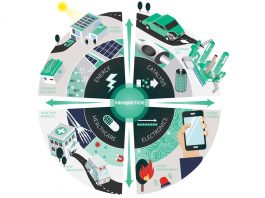As part of a recently launched collaborative research project, Karlsruhe Institute of Technology (KIT) aims to create new quantum materials by exploiting the strong coupling between a material’s elasticity and its electronic quantum phases.
Partnered with KIT, the Collaborative Research Center/Transregio (CRC/TRR) project will be coordinated by the University of Frankfurt/Main. The project, named ‘Elastic Tuning and Elastic Response of Electronic Quantum Phases of Matter’ (ELASTO-Q-MAT), will be funded by the German Research Foundation (GRF) with around €10m over the next four years.
“I congratulate the scientists involved on this appreciation of their thrilling research concept and look forward to the results of their work,” says Professor Oliver Kraft, KIT Vice-President for Research.
Studying the novel physical phenomena of solids
The CRC/TRR 288 ELASTO-Q-MAT will focus on novel physical phenomena of solids resulting from a particularly strong coupling between a material’s elastic properties and its electronic quantum phases. Based on the findings obtained, the researchers will produce new quantum materials with unusual properties and further the application potential resulting from interactions between mechanical and electronic properties.
“Quantum materials with easily adjustable electronic properties are the key to future quantum technologies,” says Professor Jörg Schmalian, Head of the Institute for Theoretical Condensed Matter Physics (TKM) of KIT, Topic Spokesperson at the KIT Center Materials in Technical and Life Sciences, and Co-spokesperson of the new ELASTO-Q-MAT CRC/TRR.
Changing materials’ electronic and magnetic properties
Many materials respond to mechanical deformation by changing their electronic or magnetic properties. For instance, mechanically induced doubling of transition temperatures occurs in certain oxides or novel charge orders develop in high-temperature superconductors. Some materials exhibit a unique superelasticity with reproducible strains of nearly 20%. “To tackle central questions of future quantum technologies, we can and have to combine smart experimental tricks with elegant quantum field theory,” Schmalian explains.
The ELASTO-Q-MAT CRC/TRR is affiliated to the KIT Materials Center for Technical and Life Sciences. All researchers involved in this centre are members of the Institute for Quantum Materials and Technologies (IQMT) that was established in January 2020. Project partners are Mainz University, Max Planck Institute for Polymer Research, Mainz, and the Max Planck Institute for Chemical Physics of Solids, Dresden.









